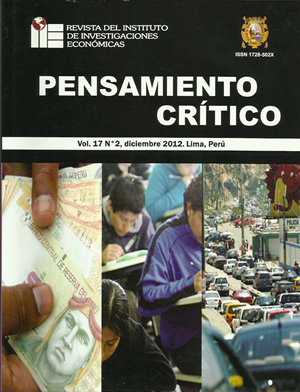Algunos efectos de la expansión monetaria en las tasas de interés del mercado de préstamos
DOI:
https://doi.org/10.15381/pc.v17i2.8938Keywords:
Relationship monetary interest, business calculations, component price gouging.Abstract
This article states that an employer who provides a price increase in the market looking for loans willing to pay higher interest. The lender that provides a price increase, only provides loans if the market interest rises above the prevailing market interest in a situation where an expected retail price increases. The entrepreneur is not afraid that higher market interest, if you think your project will cost so that you can withstand that higher market interest. Such price increases planned unleashes an upward trend in market interest. By varying the ratio of monetary currency as occurred between 1963-1993 foreseeing a rise in prices, the upward trend prevailing market interest. So every loan is incorporated in a Compensation for rising prices. In the analysis of monetary expansion process, we assume that the presence of extra money in the loan market disturbs the adequacy of the economic system to the circumstances of the loan market, disturbing trend towards certain prices and interest rates. The variation of the ratio of monetary currency at the same time does not affect, nor in the same proportion, prices, wages and interest. Such variation affects the interest because that different reaction rates, changes in income and wealth people. The temporary modification of interest is further evidence that different reaction rates. The earlier you go to market the new money loan, more interest will be affected violence.Downloads
Published
Issue
Section
License
Copyright (c) 2012 Pablo Rivas Santos

This work is licensed under a Creative Commons Attribution-NonCommercial-ShareAlike 4.0 International License.
THE AUTHORS RETAIN THEIR RIGHTS:
a. The authors retain their trademark and patent rights, and also on any process or procedure described in the article.
b. The authors retain the right to share, copy, distribute, execute and publicly communicate the article published in Pensamiento Crítico (for example, place it in an institutional repository or publish it in a book), with recognition of its initial publication in Pensamiento Crítico.
c. The authors retain the right to make a subsequent publication of their work, to use the article or any part of it (for example: a compilation of their works, notes for conferences, thesis, or for a book), provided they indicate the source of publication (authors of the work, journal, volume, number and date).






